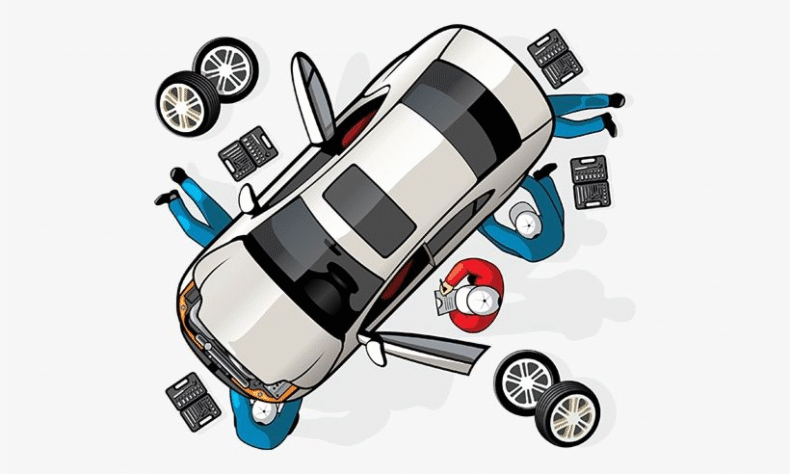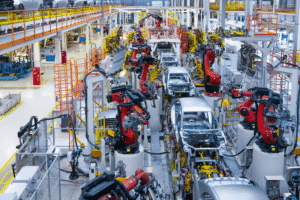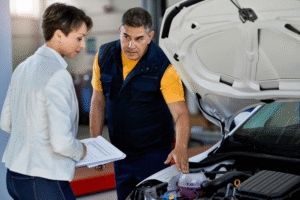
Introduction Digital Vehicle Inspection
Car inspections are a crucial part of the business model for many companies, especially those in the automotive, insurance, and fleet management industries. These inspections help companies Digital Vehicle Inspection:
- Track their inventories
- Maintain their fleets
- Monitor the condition of their assets
Traditionally, car inspections relied entirely on physical inspectors and surveyors. But thanks to advancements in technology, automated vehicle inspections are quickly becoming the preferred approach for companies worldwide.
Let’s explore which companies rely on car inspections and how digital solutions are overcoming traditional challenges.
What Types of Companies Depend on Car Inspections?

Car inspections are essential for companies operating in the automotive industry, particularly for:
-
- Car Rental and Leasing Companies: Regular inspections ensure that cars returned by customers are in good condition.
- Used Car Dealers: Inspections help assess the condition of vehicles before resale.
Auto Insurers: Insurance companies rely on inspections to assess damage and determine claims.
Why Inspections Matter for These Companies
Since these companies often operate with fleets of vehicles that leave their possession frequently, inspections serve a dual purpose:
- Track Vehicle Condition: Inspections record the physical condition of the vehicle and establish a baseline, helping companies monitor how the car is being used.
- Detect New Damage: Regular inspections can identify new damage that may have occurred while the vehicle was with a customer. This enables companies to accurately charge for any damage caused.
Example: Odometer readings provide a clear picture of how far a vehicle has traveled. Regular inspections can also identify potential issues, allowing companies to repair or replace parts before they become serious problems.
How Do Traditional Car Inspections Work?

In the traditional model, customers sign up for services where they use a company’s vehicle — such as in car leasing, car rentals, or insurance agreements. Since the vehicle is often located away from the company’s physical location, sending a customer back to a storefront for inspections isn’t practical.
Here’s how the traditional process unfolds:
- Schedule an Inspection: The company arranges a convenient time with the customer.
- Deploy a Surveyor: A physical inspector visits the vehicle’s location.
- Conduct Visual Inspection: The surveyor visually assesses the vehicle for damages and records their findings.
- Report Submission: The surveyor forwards the vehicle condition report to the company.
- Process Evaluation: The company processes the report and determines the next steps.
While this method works, it comes with several challenges — from high costs to potential delays and errors. Let’s look at how digital vehicle inspections solve these issues.
How Digital Vehicle Inspections Overcome Traditional Bottlenecks
Companies like Inspektlabs building solutions for AI-powered vehicle inspections have completely transformed the car inspection landscape by offering a faster, more accurate, and cost-effective solution. Here’s how they address the most common challenges:
A. Reduced Costs
One of the biggest advantages of automated car damage assessments is the significant cost reduction.
- Manual inspections require hiring surveyors and paying for travel, which can cost anywhere between $100-$300 per inspection.
- With AI-powered inspections, the cost-per-inspection drops to just a few dollars, drastically reducing overall operational expenses.
B. Time Savings and Increased Efficiency
AI inspectors eliminate the need to schedule appointments and send surveyors, reducing inspection time from days to just a few minutes.
Why It Matters:
- Manual inspections can take 2-3 days due to scheduling, travel, and paperwork.
- AI inspections generate a detailed report within minutes, enabling companies to offer faster services, even in remote areas.
Example: Consider a remote location like Angle Inlet, Minnesota, where surveyors need to cross the U.S.-Canada border to reach the site. In such cases, digital inspections save not only time but also resources.
C. Reduced Risk of Fraud
Manual inspections leave room for fraud and errors due to human involvement. Studies suggest that fraud rates in manual inspections can be as high as 10-15%.
With AI-based inspections, companies benefit from:
- Higher Accuracy: AI models analyze images with precision, minimizing false positives/negatives.
- Lower Fraud Risk: AI reduces subjectivity and eliminates human biases, making the inspection process more transparent and reliable.
D. Greater Accessibility
The Covid-19 pandemic highlighted the need for remote solutions. Many companies struggled to send surveyors due to unpredictable travel restrictions.
Why Digital Inspections Work Better:
- Companies can perform inspections remotely, unaffected by travel limitations.
- Digital inspections allow companies to expand their services to new geographical regions without logistical challenges.
E. Improved Customer Experience
Digital vehicle inspections drastically improve the overall customer experience by eliminating the pain points associated with manual inspections.
Common Issues with Manual Inspections:
- Long wait times for scheduling and inspection
- Higher costs for physical inspections
- Inconsistent or subjective reports
With automated inspections, companies can provide:
- Faster damage assessments
- Transparent and reliable reports
- Seamless claim processing
This streamlined process enhances customer satisfaction by reducing delays and ensuring that claims are processed more efficiently.
Why Digital Vehicle Inspections Are the Future
AI-powered vehicle inspections not only streamline the inspection process but also offer value-added services, such as:
- Fraud Detection: Automated checks ensure greater transparency.
- Claims Automation: Faster and more accurate damage assessments speed up claims processing.
- Predictive Maintenance: AI models can predict potential issues before they escalate, helping companies take preventive action.
Conclusion
The shift from manual to digital vehicle inspections is a game-changer for companies in the automotive, rental, and insurance industries. Digital inspections offer:
✅ Lower costs
✅ Faster inspection times
✅ Improved accuracy and fraud prevention
✅ Better accessibility and broader geographical reach
✅ Enhanced customer experience
As technology continues to evolve, manual inspections will become a thing of the past. Companies that embrace digital vehicle inspection solutions now will not only improve their operational efficiency but also gain a competitive edge in their industry.
The future is digital — and the time to adapt is now!





